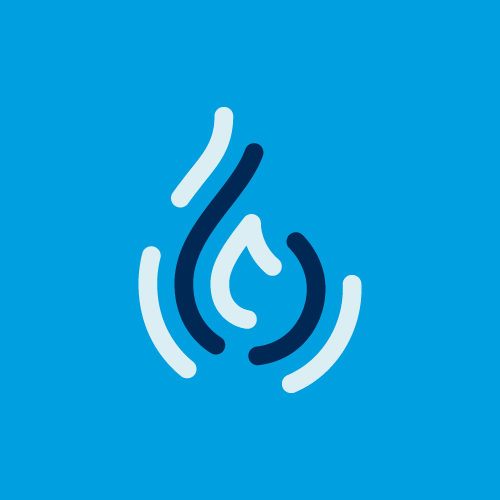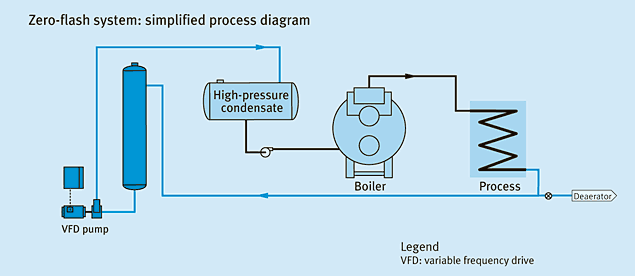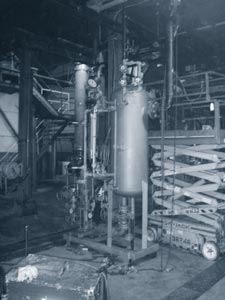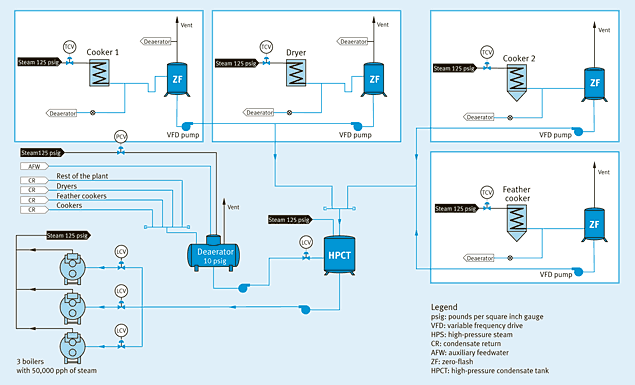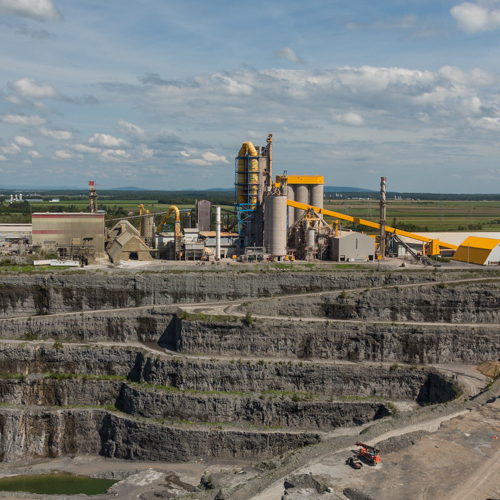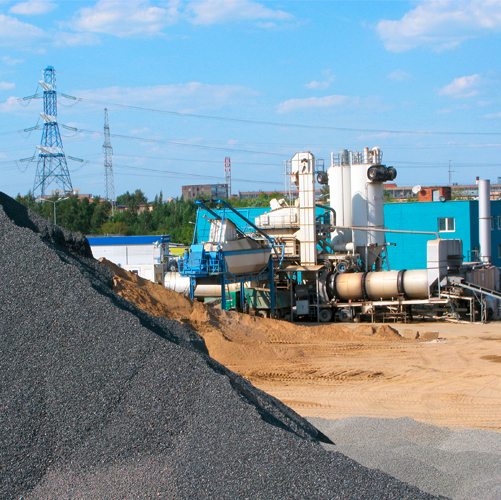The Sanimax plant in Montréal, specializing in rendering hog and poultry residues, has modified the condensate return system neces-sary for its processes. In addition to major gains in efficiency, Sanimax finds that a zero-flash pressurized condensate return system improves the quality of its products and increases its productivity.
To generate steam at a given pressure, sensible heat (energy) is needed to raise the water temperature to the boiling point, followed by latent heat to evaporate the water. The boiling point varies according to the water pressure.
In a conventional steam system, once the steam has been used, it is returned in liquid form (condensate) to the boiler via a con-densate tank.
Once the steam condenses and passes through the other side of the trap, it is still at a temperature above the boiling point. Sensible heat (energy) is released in the form of flash steam so that the water temperature decreases to the boiling point at the given pressure.
This phenomenon causes the release of a large quantity of steam through the condensate tank vent. That’s when energy loss occurs and, in some cases, this may be very significant, particularly in a high-pressure steam system.
To prevent this loss, certain technologies exist, including the zero-flash system, which uses a pressurized condensate return.
Sanimax project

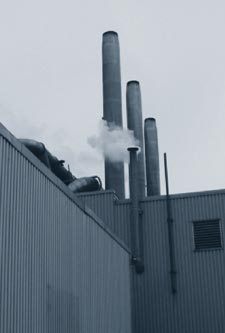
The Sanimax Group’s Montréal plant specializes in rendering hog and poultry residues. Rendering is a service that prevents animal by-products from the agri-food industry from ending up in landfill sites or illegal disposal. Sanimax recovers these residues and converts them into various useful products: biodiesel, purified fats, animal protein meal, etc. Most of the processes necessary for rendering consume a lot of energy requiring high-pressure steam: evaporation, cooking, drying.
GCI experts en énergie, a firm specializing in steam production systems engineering, was mandated to analyze certain major problems regarding the steam/condensate network feeding the evaporation, cooking and drying processes. These problems were the inadequate capacity of the con-densate return system and the unreliability of the steam boiler feedwater pumps. After investigation, several solutions were analyzed. Based on GCI’s recommendations, the Sanimax team decided to convert this problem into an opportunity by investing in a system that could generate major energy savings: the zero-flash pressurized condensate return system.
The zero-flash system is a condensate return approach that completely eliminates waste steam, which is the energy lost in open condensate return systems. In the zero-flash system, the traditional steam trap is replaced with a pressurized tank equipped with a variable frequency drive (VFD) high-temperature pump. The condensate is pumped into a high-pressure tank (same pressure as the boilers) located in the boiler room and feeding water to the boilers. The other condensate returns are sent to the deaerator. The above figure presents the overall system diagram, showing the new equipment.
Before this project was implemented, the Sanimax plant operated with a steam-condensate open system. Thus, the different users’ condensate returns were returned to a condensate tank at atmospheric pressure and a large quantity of flash steam escaped through this tank’s vent.
The zero-flash system’s design maintains the condensate under pressure and prevents flash steam from forming. This is how the feedwater of the steam boilers is maintained at a temperature of 138°C to 149 °C (280°F to 300°F), thus reducing the fuel consumption necessary to vaporize the water.
In addition, the elimination of the condensate tank and the modifications made to the deaerator allow significant recovery of flash steam from the users not connected to the zero-flash system. This steam is used to preheat the auxiliary feedwater for the deaerator.
In addition to the significant reduction of waste steam losses, energy savings are also generated by:
- elimination of hot condensate overflows from the former atmospheric condensate tank;
- reduction of the cold auxiliary feedwater to be reheated in the deaerator;
- recovery of the condensate from the feather cookers that was not returned to the boiler;
- increasing the temperature of the water sent to the boilers.
Energy performance
Installation of the pressurized condensate return system allows a reduction of steam losses into the atmosphere of more than 30,000,000 pounds per year (~3500 pph of steam), a reduction of auxiliary feedwater consumption of 32,000 m3
To conclude, Sanimax did not only obtain a gain in energy efficiency. An increase in productivity and product quality was also recognized.
In fact, some processes were also limited by the capacity of the condensate return pipes (exchanger flooding). All the processes can now operate at full capacity at the same time without any problem.
Finally, the zero-flash condensate return pipes were installed parallel to the existing pipes with steam traps. Thus, in case a pumped condensate return system fails, the operators can turn the valves and switch into standard mode with the steam traps. This improves the condensate return system’s reliability. The boiler room net steam production capacity has also been increased. Although steam systems have a reputation as energy gluttons, this project demonstrates that reliable technologies exist to improve energy performance significantly.
Daniel Gendron, Eng., CEM
Technical Advisor
DATECH Group
Collaborator: Sylvain Chenail, Eng., GCI
Continue reading




